CS 112 Lab 9: Binary heaps
Agenda
Heap representationA binary heap is a complete binary tree and can be stored in an array as illustrated below. Heap manipulations can be performed using array indices and hence alleviates the need for pointer manipulation. The left child index of a node N is 2*N, the right child index is (2*N+1). The parent index of N is N/2. Note that it is easier to use array indices starting with 1 when working with heaps.  |
Heap propertyAny node in a binary heap is smaller than all other nodes in its subtree. In the above example, nodes which violate the heap property are shown in gray, those which satisfy are in orange. |
Heap operationsA heap datastructure is designed for very efficient insert() and deleteMin() operations. A tradeoff is that operations like find() or merge() can be quite expensive depending on the implementation. To perform operations on a heap, we need percolateUp() and percolateDown() to rebalance an unbalanced heap (when some nodes violate the heap property). These operations are best explained with examples illustrated below. We first balance the above heap via percolateUp() and percolateDown() operations and then perform insert() and deleteMin() operations. Each figure below illustrates the resulting heap after applying an operation (displayed in the lower left corner) on the heap in the previous image. The first figure is the initial unbalanced heap.
   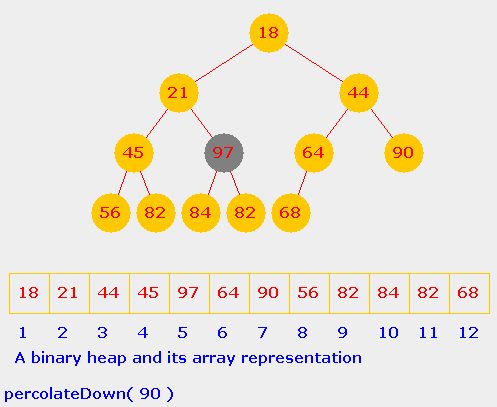 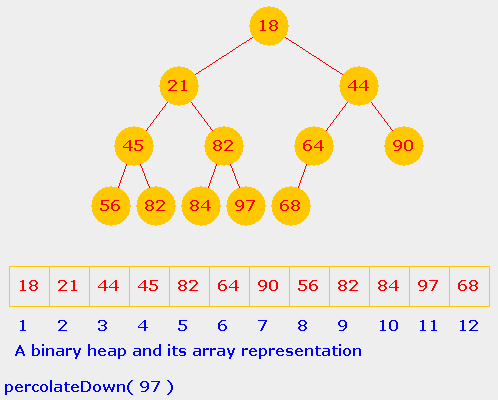 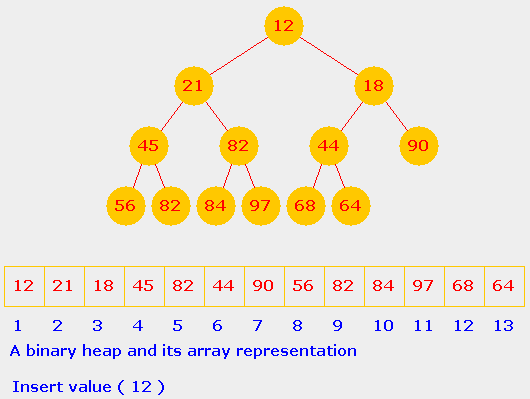 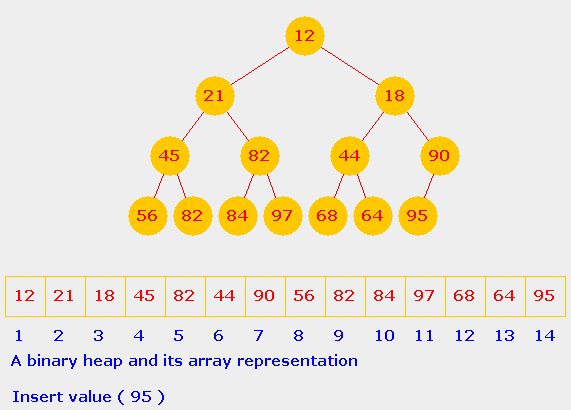  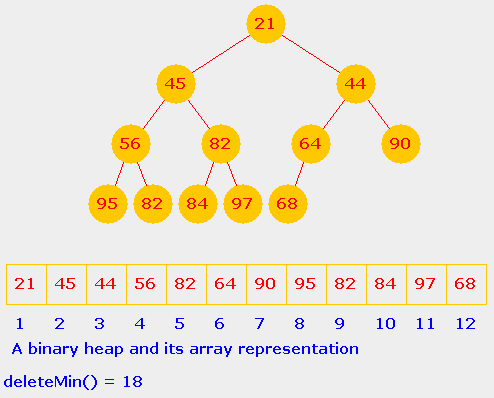 |
Today's example and associated tasks
|
Download class files for the lab below,
|
URL
http://cs-people.bu.edu/tvashwin/cs112_spring08/lab09.html |